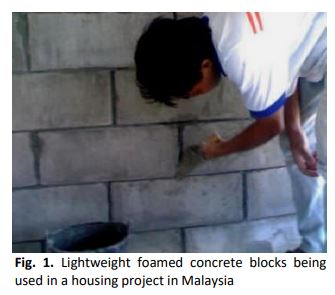Influence of Density, Porosity and Void Size on Thermal Conductivity of Green Lightweight Foamed Concrete
DOI:
https://doi.org/10.37934/arfmts.92.2.2535Keywords:
Lightweight foamed concrete, thermal conductivity, void size, porosityAbstract
One of the methods to reduce the energy content of buildings is through selection of building materials. Strain on conventional energy can be reduced by employment of low energy materials and efficient structural design. The selection of materials also helps to capitalize on indoor comfort. For instant, the use of materials and components with small embodied energy or low thermal conductivity has enhanced the indoor comfort in building. Thus, a high level of insulation in any new material development is an essential step to an energy efficient design. The main purpose of this study is to investigate the thermal conductivity of green lightweight foamed concrete samples ranging from 650 until 1050 kg/m3 with constant cement-sand ratio of 1:1.5 and water-cement ratio of 0.5. This study was limited to the influence of density, porosity and void size on thermal conductivity of lightweight foamed concrete. Lower density foamed concrete translates to lower thermal conductivity. The density of foamed concrete is controlled by the porosity where lower density lightweight foamed concrete indicates greater porosity. Hence, thermal conductivity changes considerably with the porosity of lightweight foamed concrete because air is the poorest conductor compared to solid and liquid due to its molecular structure.
Downloads

































